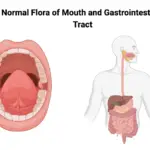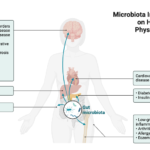Basic Microbiology 8 Views 1 Answers
What would be the consequences fi a significant proportion of the population was not vaccinated against childhood diseases like measles or pertussis?
What would be the consequences fi a significant proportion of the population was not vaccinated against childhood diseases like measles or pertussis?
Answered
If a significant proportion of the population were not vaccinated against childhood diseases like measles or pertussis, several serious consequences could arise:
1. Outbreaks of Disease
- Increased Incidence: Without adequate vaccination coverage, diseases like measles and pertussis can spread more easily. This can lead to outbreaks, as seen in the past before vaccines became widely available.
- High Transmission Rates: Measles and pertussis are highly contagious. Reduced vaccination rates would likely lead to more frequent and larger outbreaks.
2. Increased Morbidity and Mortality
- Health Complications: These diseases can cause severe health complications. Measles can lead to pneumonia, encephalitis, and even death. Pertussis (whooping cough) can cause severe coughing fits, pneumonia, and can be particularly dangerous for infants.
- Increased Hospitalization: Outbreaks can lead to increased rates of hospitalization for affected individuals, putting strain on healthcare resources.
3. Herd Immunity Breakdown
- Herd Immunity: Vaccination helps protect not just the individual but also the community by contributing to herd immunity. When a significant proportion of the population is vaccinated, it reduces the likelihood of disease spread. Without sufficient vaccination coverage, this protection diminishes.
- Vulnerable Populations: Individuals who cannot be vaccinated due to medical reasons, such as those with weakened immune systems or allergies to vaccine components, rely on herd immunity for protection. Lower vaccination rates jeopardize their safety.
4. Economic Impact
- Healthcare Costs: Outbreaks and increased disease burden lead to higher healthcare costs, both for treating the diseases and for managing outbreaks.
- Economic Disruption: Widespread illness can disrupt daily life and economic activities, such as absenteeism from work or school.
5. Impact on Public Health Efforts
- Increased Efforts for Control: Controlling outbreaks requires significant public health resources, including vaccination campaigns, public education, and disease surveillance.
- Long-Term Consequences: Persistent low vaccination rates can hinder efforts to eliminate or control diseases and may lead to a resurgence of diseases that were previously under control.
6. Potential for Increased Vaccine Hesitancy
- Loss of Trust: Frequent outbreaks due to low vaccination rates can lead to increased fear and mistrust of vaccines, potentially exacerbating vaccine hesitancy and resistance.
Did this page help you?




